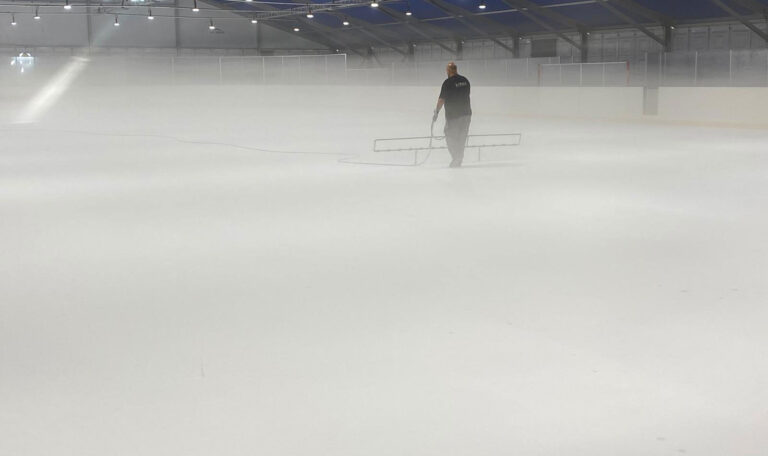A significant factor that impacts ice quality is weather – hot or cold, humid, or dry, weather can impact ice quality by affecting both sensible heat loads and latent heat loads. How the weather impacts ice quality is influenced by several factors, including the location of the facility, the quality of the facility itself, and even the maintenance elements used to offset weather impact. In this article, we’ll examine the difference between sensible & latent heat loads, and how to successfully manage the impact of weather conditions on ice quality.
WHAT IS SENSIBLE HEAT?
Sensible heat is heat that can be “sensed” through temperature change. A good example is the temperature registered on your thermostat.
There are many sensible heat loads that impact the ice surface, including ceiling radiation, running equipment, ambient air, rink lights (metal halide), skaters, ground heat and header heat gain. To maintain a quality ice surface, a successful ice maker will need to control and maintain the arena temperature fluctuation to minimize impact.
Ceiling radiation accounts for 28% of heat load on the ice surface so it is safe to say that most facilities will see success if this sensible heat load can be effectively managed. Ceiling radiation affects the ice surface most significantly when weather conditions are sunny and hot. In heating up the roof of the facility that heat is eventually radiated into the arena. Ice makers experiencing an increased sensible heat load due to ceiling radiation will note that their ice surface will become soft and ice resurfacing floods will take much longer to freeze. This will occur most likely late in the afternoon after the sun has reached its peak. Ideally facilities experiencing this issue will look to upgrade their ceiling installation to a low-emissivity ceiling which will help to eliminate this problem.
For facilities that do not have this option, it is important to consider air motion in how the radiant heat can impact the ice surface. Ideally, air motion should be reduced as much as possible, as the boards and glass create a stratified effect on the air, keeping the cooler air close to the ice surface as the hot air rises to the ceiling. If there is a lot of motion in the air that is created from open doors, air handling units, dehumidification systems, and other sources then that air stratification cannot fully form, and ice makers will struggle to build ice.
WHAT IS LATENT HEAT?
Latent heat is the heat that impacts state. Humidity is the latent heat factor impacted by weather that ice makers must factor into their facility and ice maintenance. High humidity, or water vapour, will cause ice to soften and negatively impact game play. Again, location of a facility will have a significant influence on humidity levels. For example, a facility in the Southern US will experience high humidity levels compared to a facility in the cold dry air of Northern Canada.
Humidity is commonly measured in terms of “relative humidity” which refers to the amount of water the air holds relative to the temperature of the air. It is also important for the ice maker to consider “absolute humidity” which is the measure of water vapour, or moisture, in the air regardless of temperature. Warm air will hold more moisture than cold air, and when the air in a facility cannot hold the water vapour, it will impact the ice in the following ways:
- The ice surface will frost making it a challenging surface for game play
- Fog will settle on the ice surface which can cause a potential safety issue
- Drips from beams can cause stalagmites to form on the ice surface
- Mould and mildew can form creating a potentially toxic environment for employees, players, and spectators alike

A cold, dry rink provides the ideal conditions for quality ice. Ice Makers should aim for a relative humidity level of 40-45% and a temperature of 55F – 60F. Facilities in locations that frequently experience weather conditions that increase humidity levels should invest in a quality dehumidification system that will ensure ideal humidity levels can be achieved.
MAKING QUALITY ICE
Observing and managing sensible and latent heat loads is a significant factor in an ice makers ability to create and maintain quality ice at their facility. While weather conditions may seem like a factor that is out of your control, looking at ways to improve the physical aspects of your facility, including roof/ceiling and dehumidification options puts control back in the hands of the ice maker. While many other factors can influence ice quality, sensible and latent heat loads are one of the most important factors to consider.
